Heating without it fails! Heating circuit in a private house: what is it
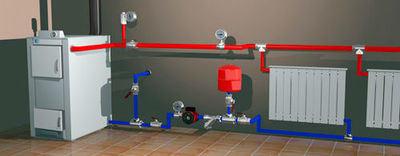
The heating system consists of supplying hot water to the radiators and cooled water to the boiler.
The heated coolant moves through pipes to the devices that heat the rooms, displacing the cold one, which heats up again.
Closed loop heating systems: what is it, what is the second one for
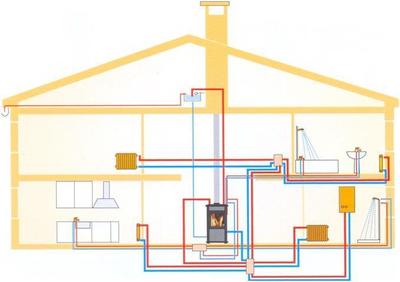
Water circuit is a system through which the coolant moves from the heater to the radiator through the supply pipes. Having given off heat, the liquid returns to the boiler through the return line. Thus, a closed cycle is created.
Innings — pipes that transfer hot water to radiators. The return line takes the cooled water and returns it to the boiler for reuse after heating.
Second circuit is used to supply housing with hot water. Water passing through the second circuit is used for domestic needs.
Connection methods, diagram
- Vertical with bottom wiring
A main pipe is run from the boiler along the lower part of the structure. From it, supply risers go up, designed to transport liquid to the batteries, which are installed in heated rooms. Pipes come out of the radiators, through which the cooled liquid flows out and returns to the boiler. When creating a diagram, the need for air outflow is calculated using special devices. The system will require air pipes, expansion tank and Mayevsky crane.
- Vertical with top wiring
From the boiler, the hot coolant flows through the main pipe to the attic. From there, the water is distributed through the supply risers to the heating radiators. The liquid that has given up heat returns through the return pipes to the boiler for reheating. When creating take into account the need for air outflow, for which an expansion tank is used. The upper wiring is more effective than the lower one, since more pressure is created in the pipes.
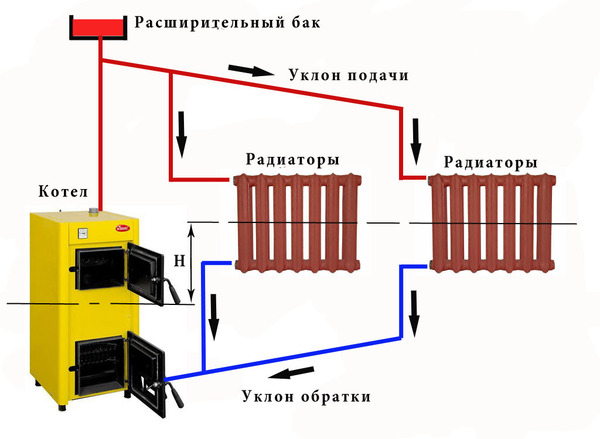
Photo 1. Connection diagram of a vertical water heating circuit with top wiring.
- Horizontal
The horizontal circuit provides forced circulation of water, therefore it is used more often than the vertical one. The system is created according to one of three schemes:
- Dead end.
- With the accompanying movement of water.
- With collector distribution.
In the first case There is one direct pipe and one return pipe coming from the boiler. The heat carriers are connected to each radiator.
In the second case the system looks similar. The difference is in the return. The pipe passes through each radiator parallel to the feed. At the last battery it turns around and returns to the boiler, having collected the coolants.
From the boiler, hot water is supplied through the main line to the distributor, and then distributed to the radiators. The same with the return: First, the coolant is collected in one tank and then goes to the heater.
Fireplace or stove with water circuit
Fireplaces and stoves with a water circuit are improved solid fuel boilersThey are more aesthetically pleasing than conventional heating boilers.
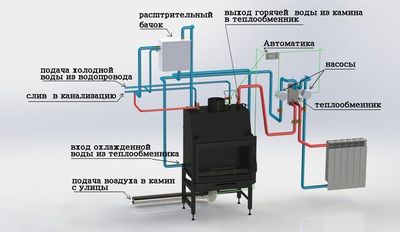
Fireplaces are most often installed in living spaces rather than hidden in basements.
Such fireplace stoves are capable of heating effectively 2-3 rooms, with large volumes the devices function unstably.
Because of this, devices are often supplemented with backup heating sources, or the fireplaces themselves are relegated to a secondary role.
Two ways to balance systems with your own hands
The procedure is designed to evenly distribute the coolant across the radiators. Its purpose create the same temperature in each heated room.
Balancing is done in one of two ways:
- By the amount of coolant.
- By the temperature of the radiators.
First type are used with precise values of coolant flow rate. This indicator is calculated when designing heating. For balancing adjustment valves will be needed, installed near the radiators, and a special adjustment device, which is connected to the return flow pipes.
The device allows determining the current flow rate of the coolant, and then adjusting it using fittings.
Attention! This method of balancing is accurate, but requires expensive equipment and the ability to handle it.
Second type used in cases where the first one cannot be used. Adjustment will require adjustment valves installed on the return lines near the radiators.
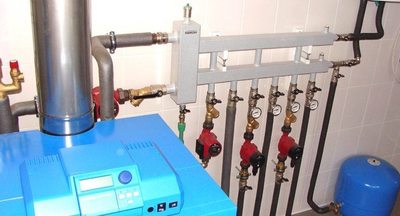
A thermometer is also needed, preferably an infrared one. Balancing is done separately for each battery. The valves are opened in turn: the first one by half a turn, the second one by one, the third one and a half, and so on.
On the last one, regardless of the number of radiators, the valve open completely. The temperature is measured on each pipe, starting with the first one, and then adjusted using fittings. This method is simple to implement, but the result is an inaccurately balanced circuit.
Features of wiring in a private house
Each heating circuit installed in low-rise buildings is closed. The heat carrier used for heating, moves in the system along a given contour cyclically.
Method of connecting the wiring in a private home depends on the structure. For tall buildings, vertical is recommended. For one- or two-story houses or baths with a large area - horizontal.
Useful video
Watch the video, which explains how to connect a water heating circuit to a solid fuel boiler.
Efficiency of the layout
A properly designed and installed heating system will allow you to warm up the room regardless of the temperature outside.






Comments